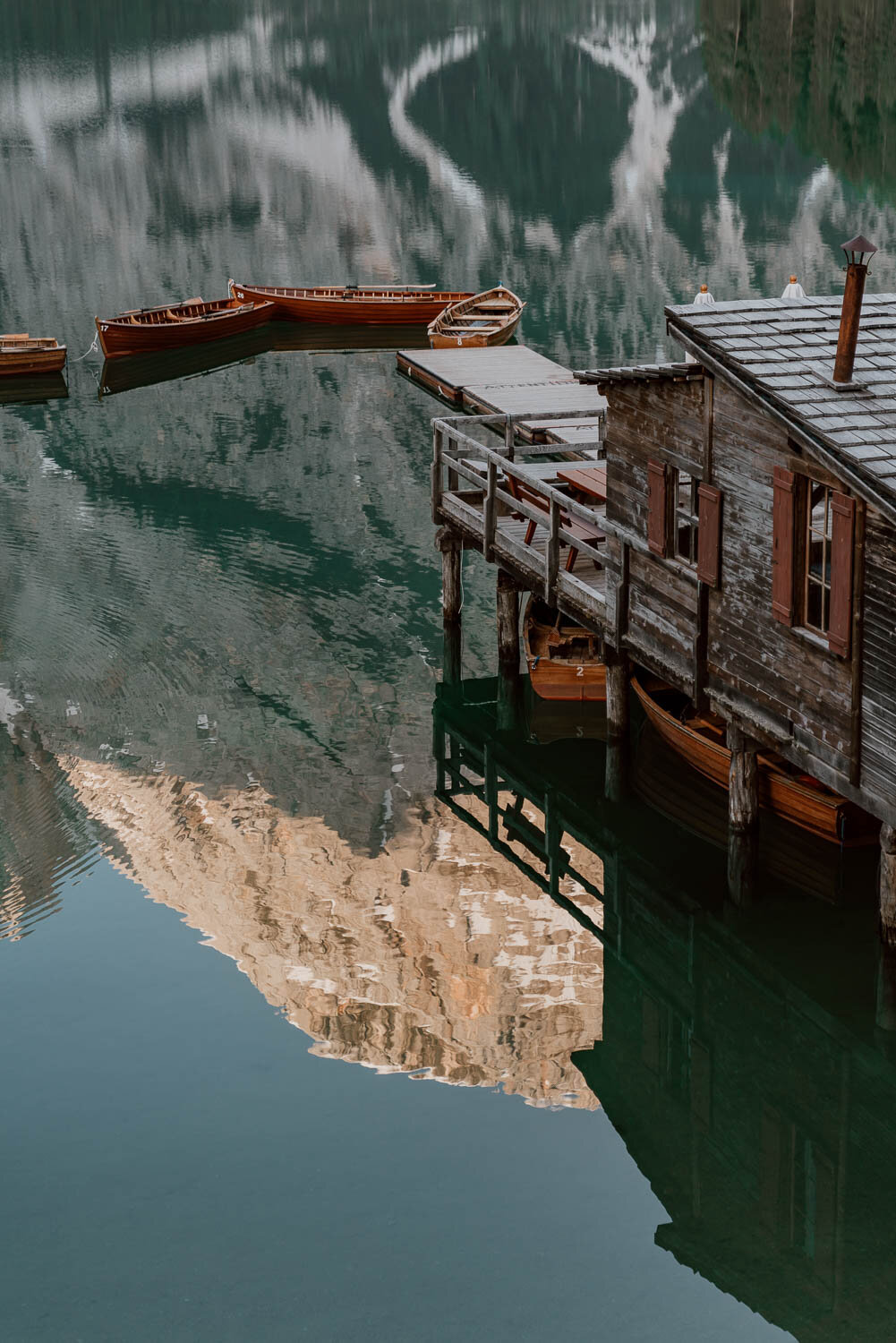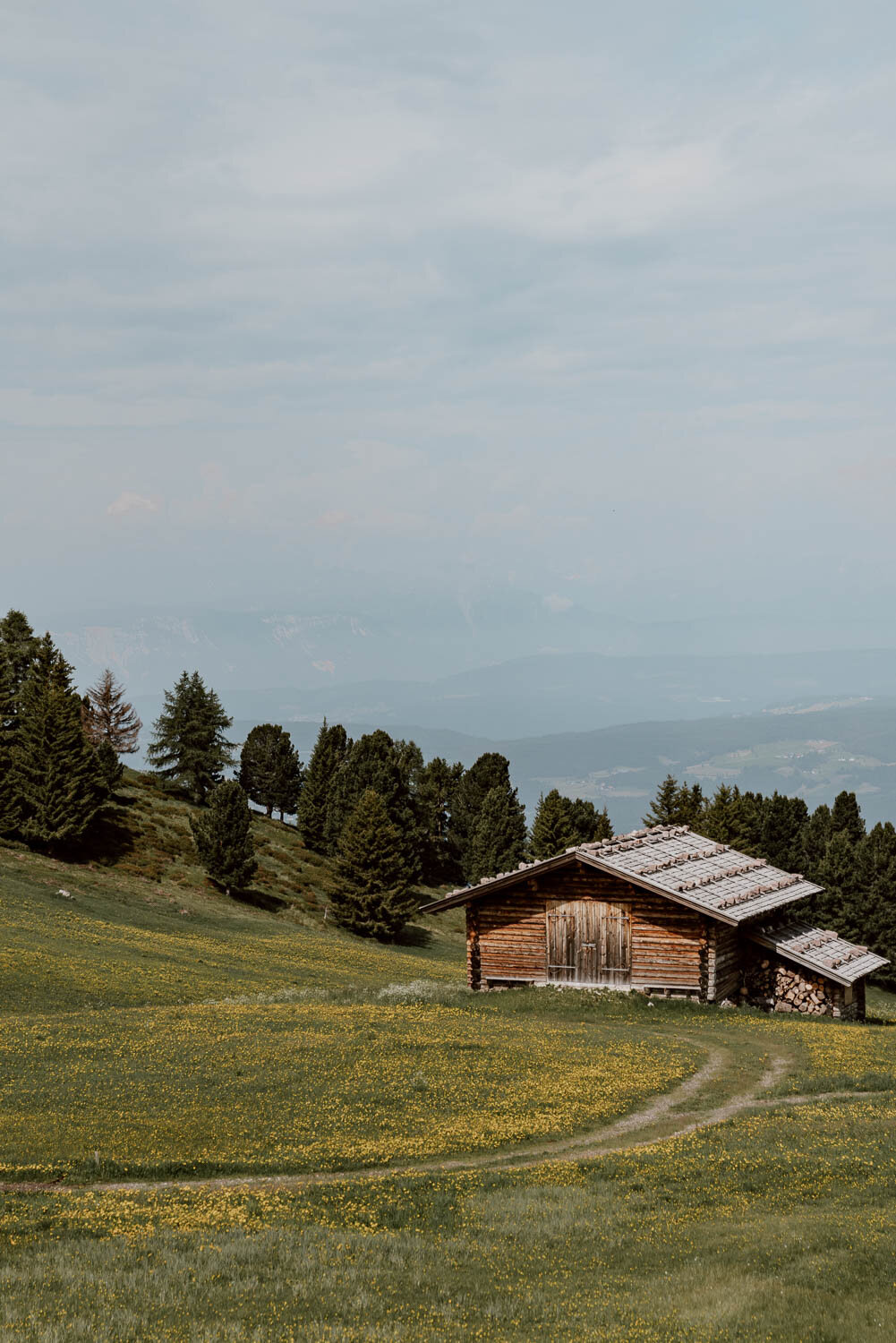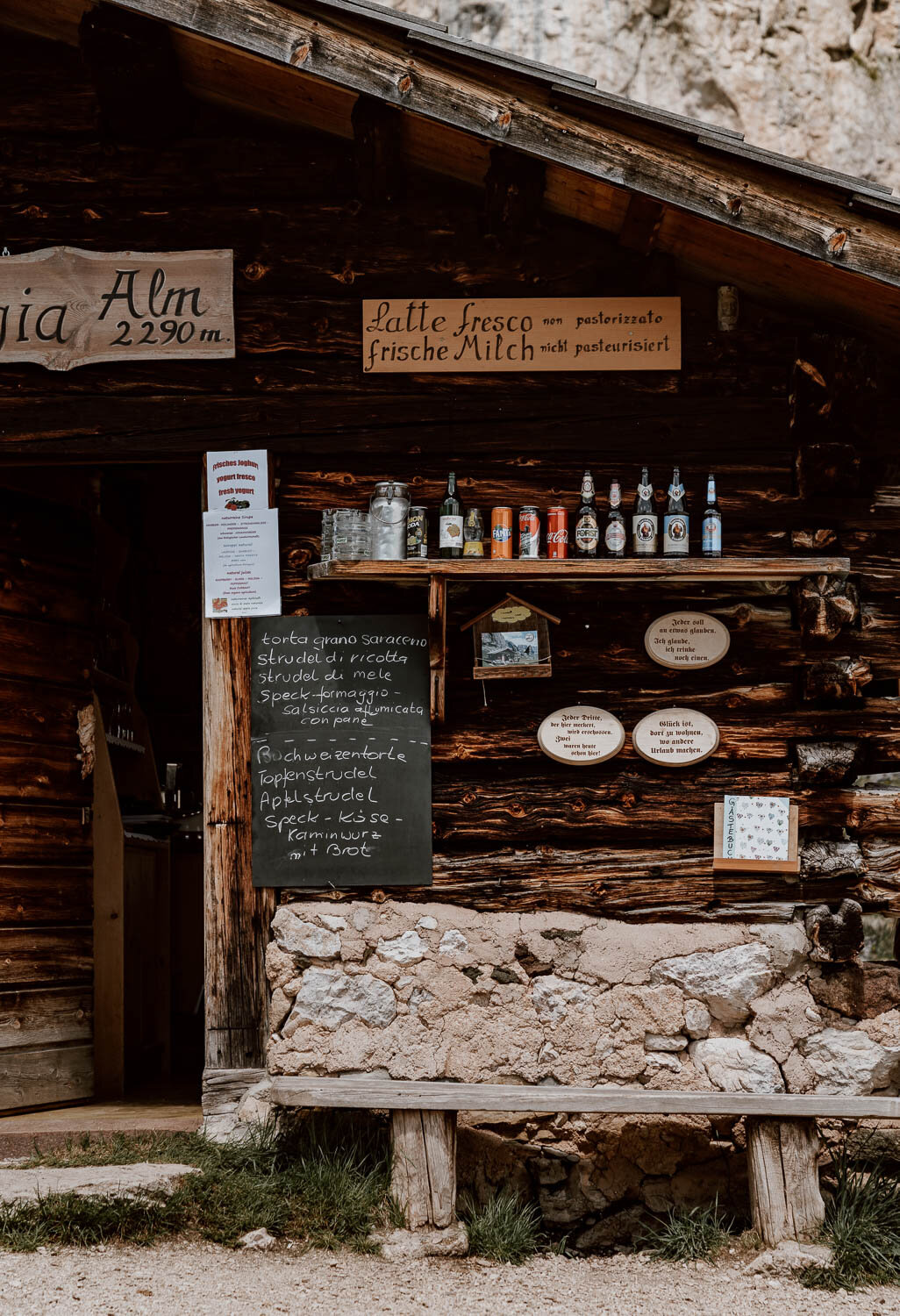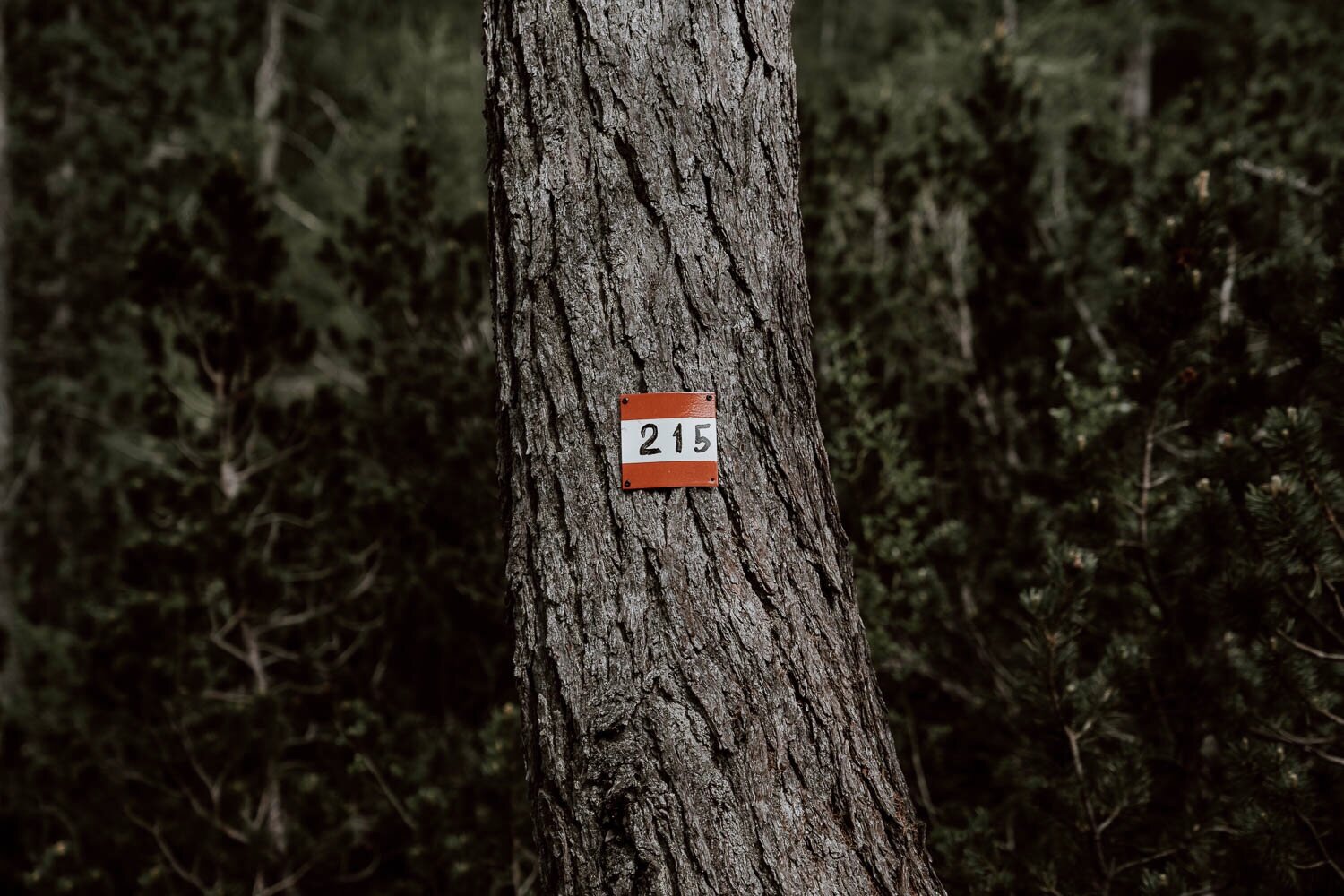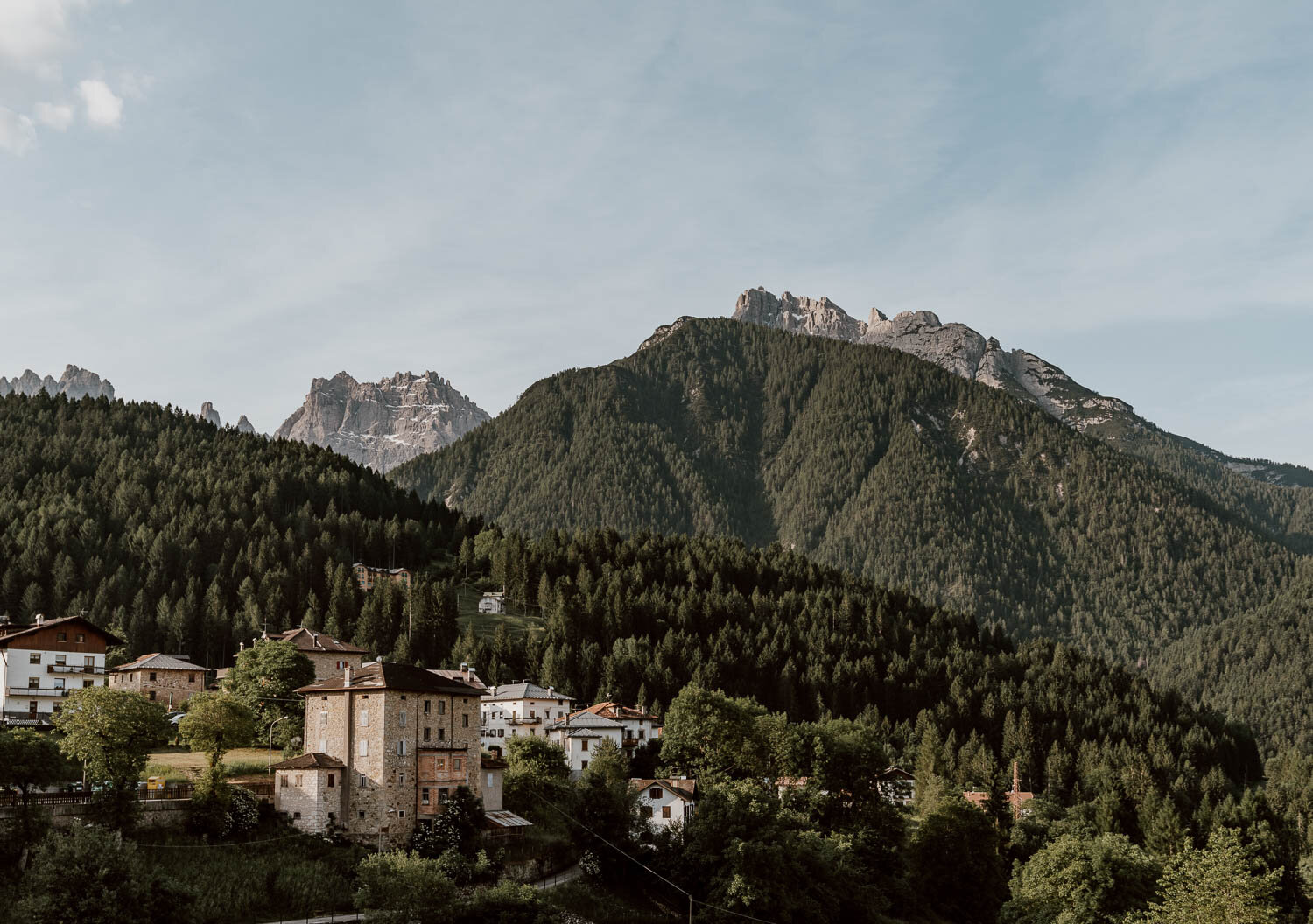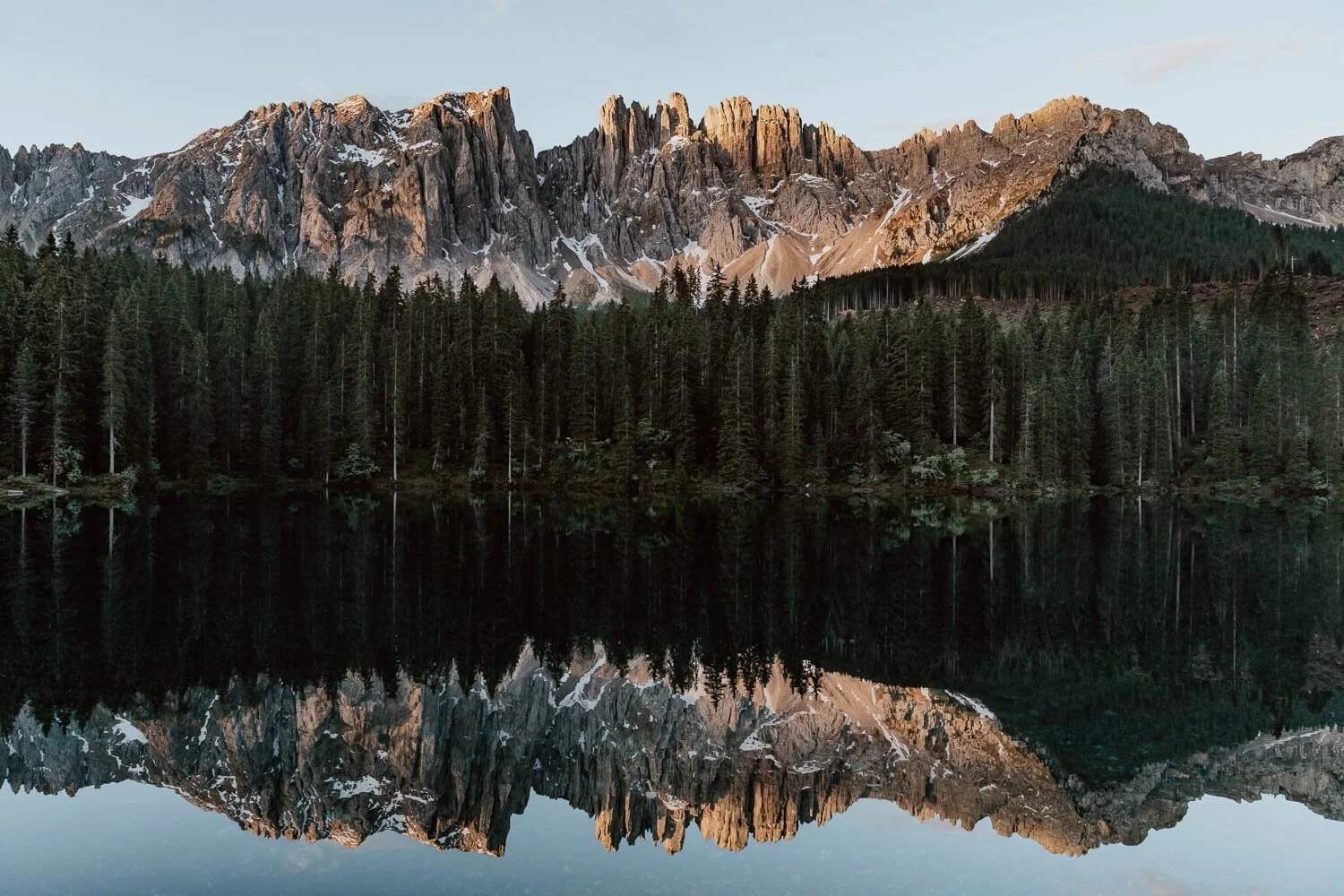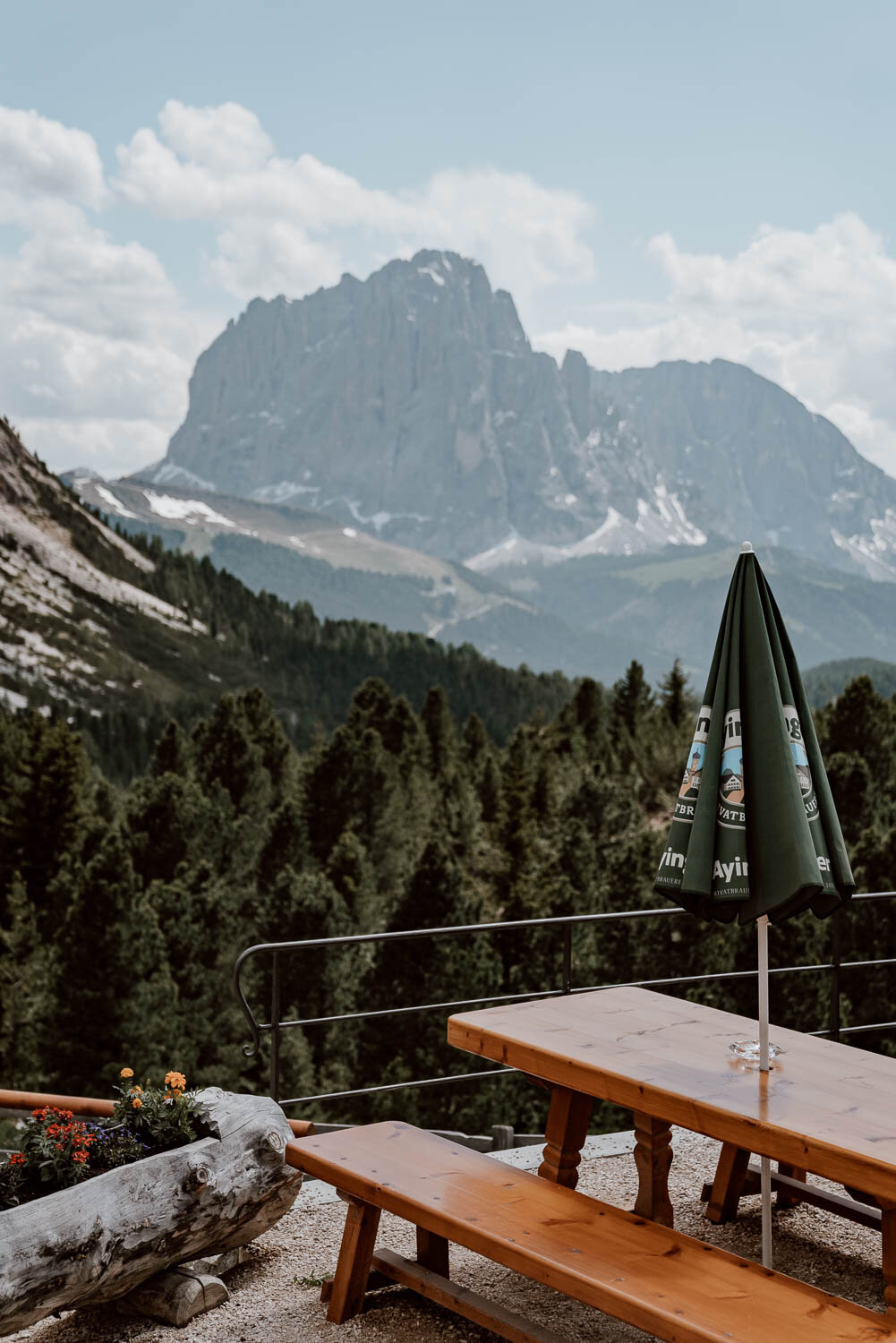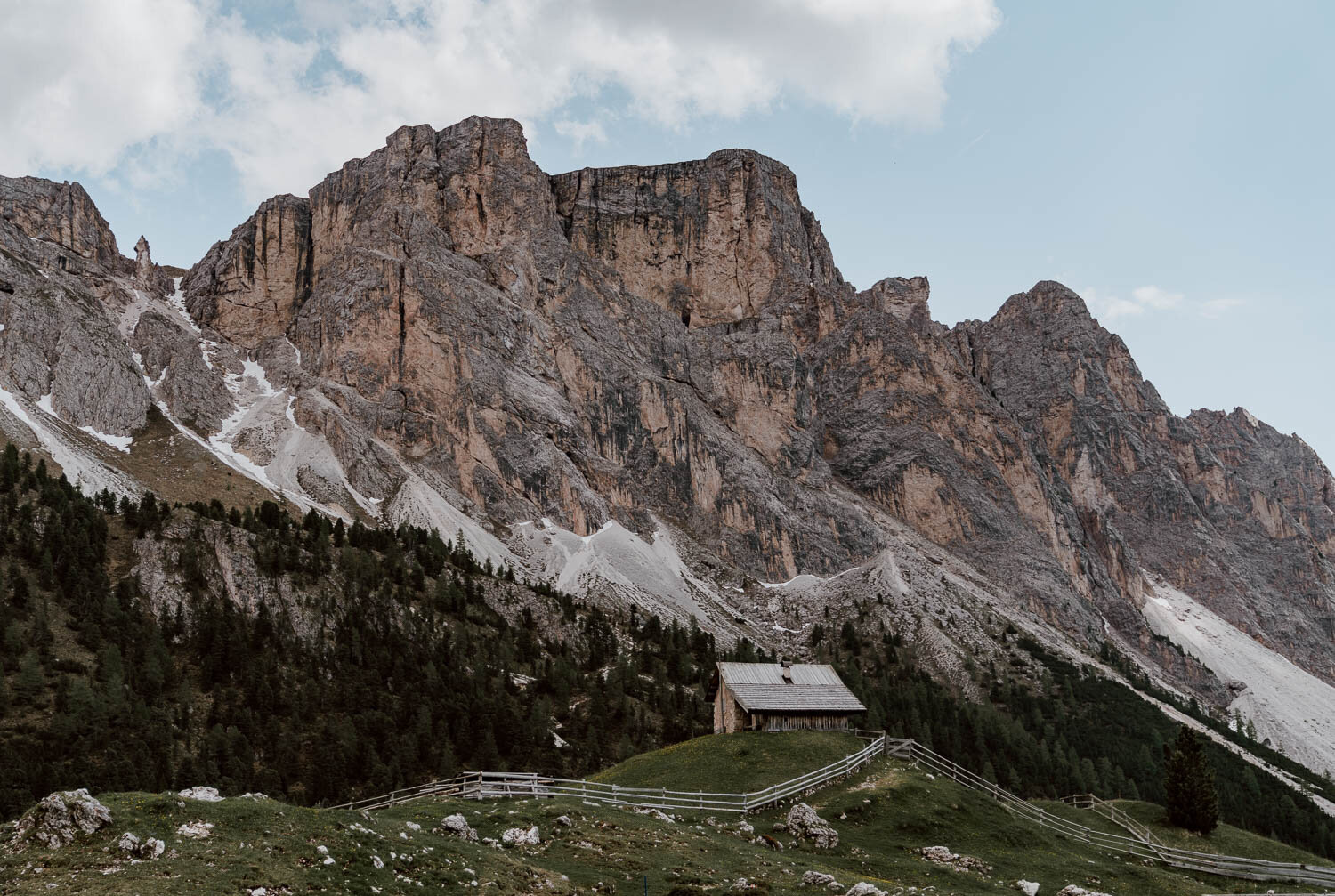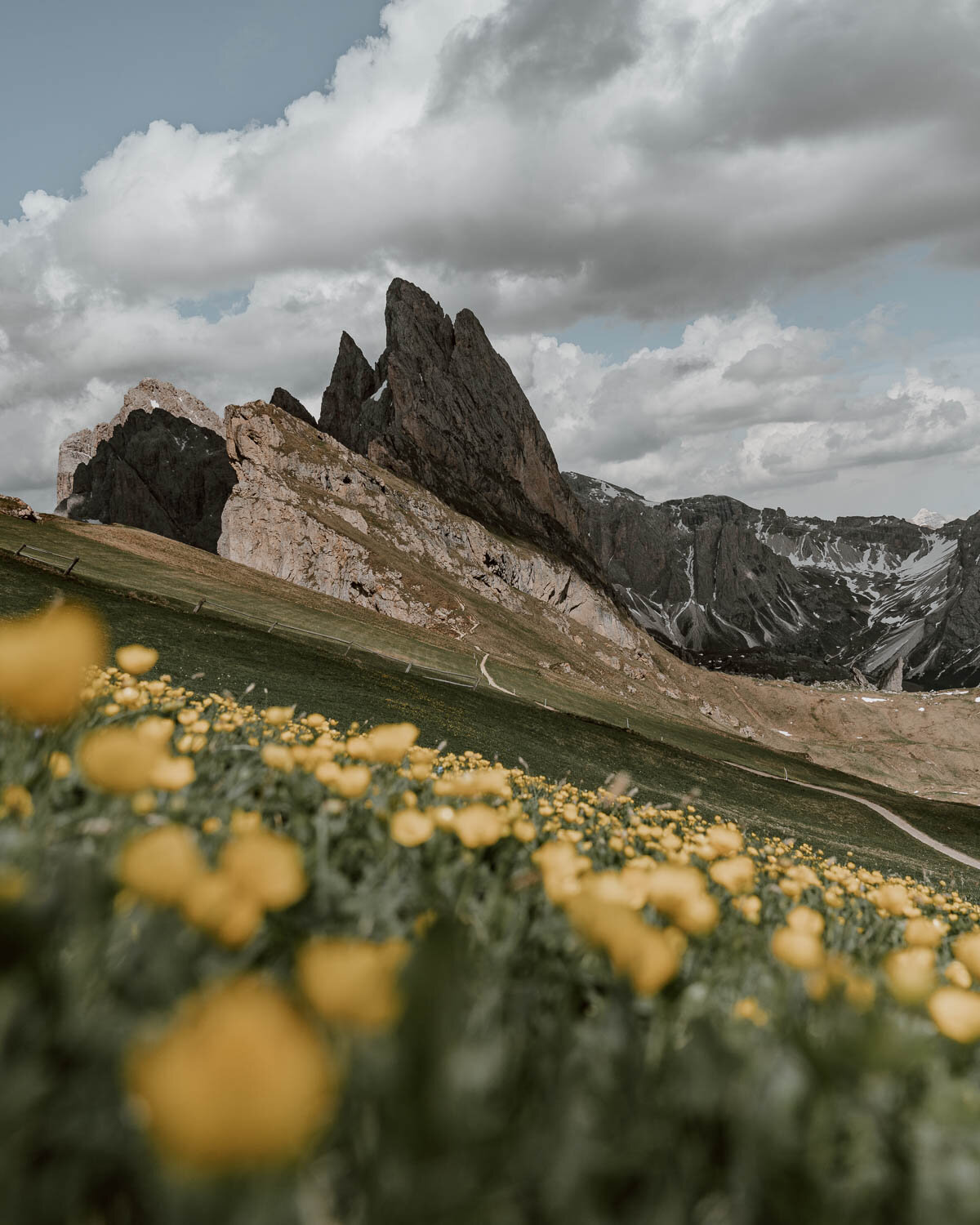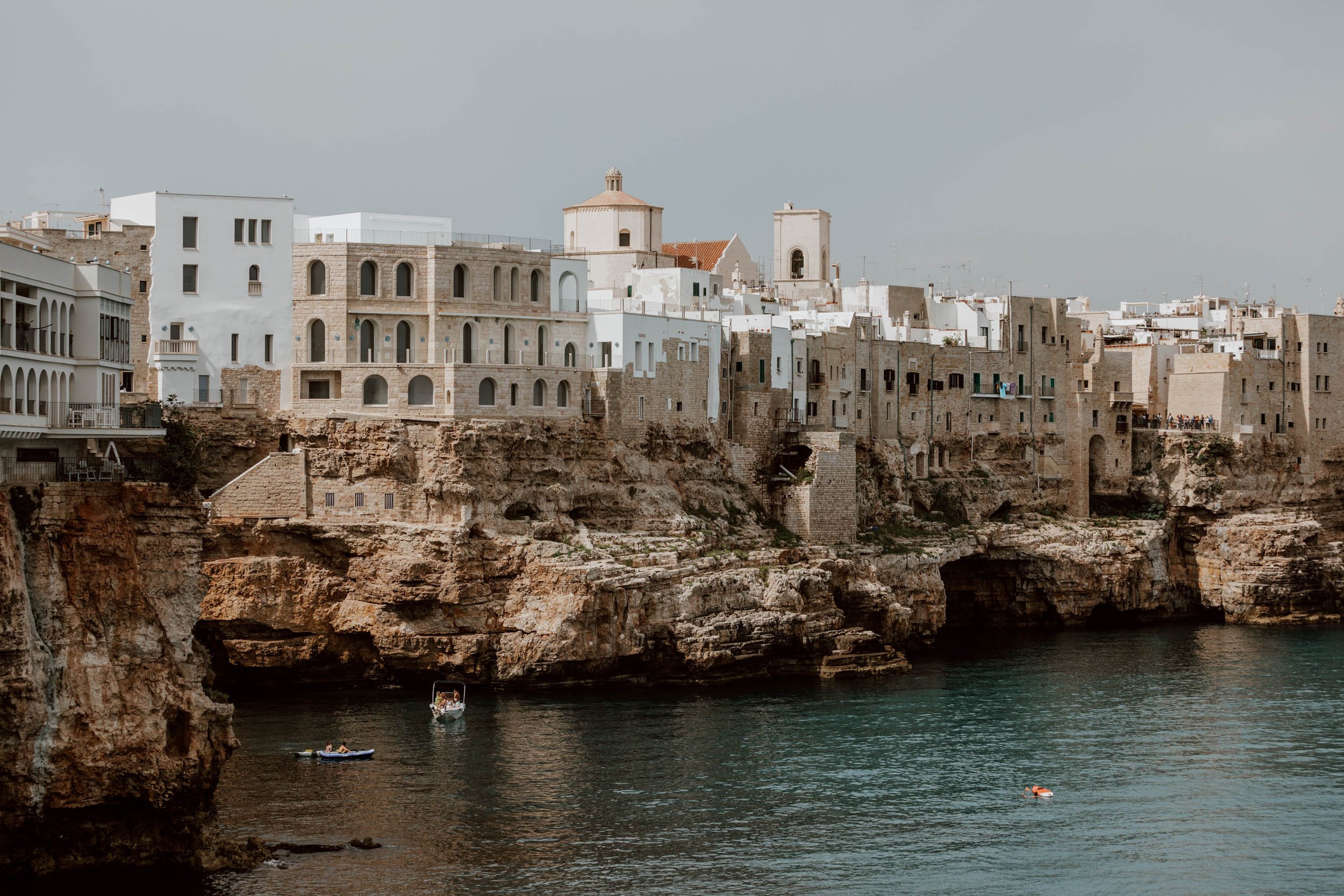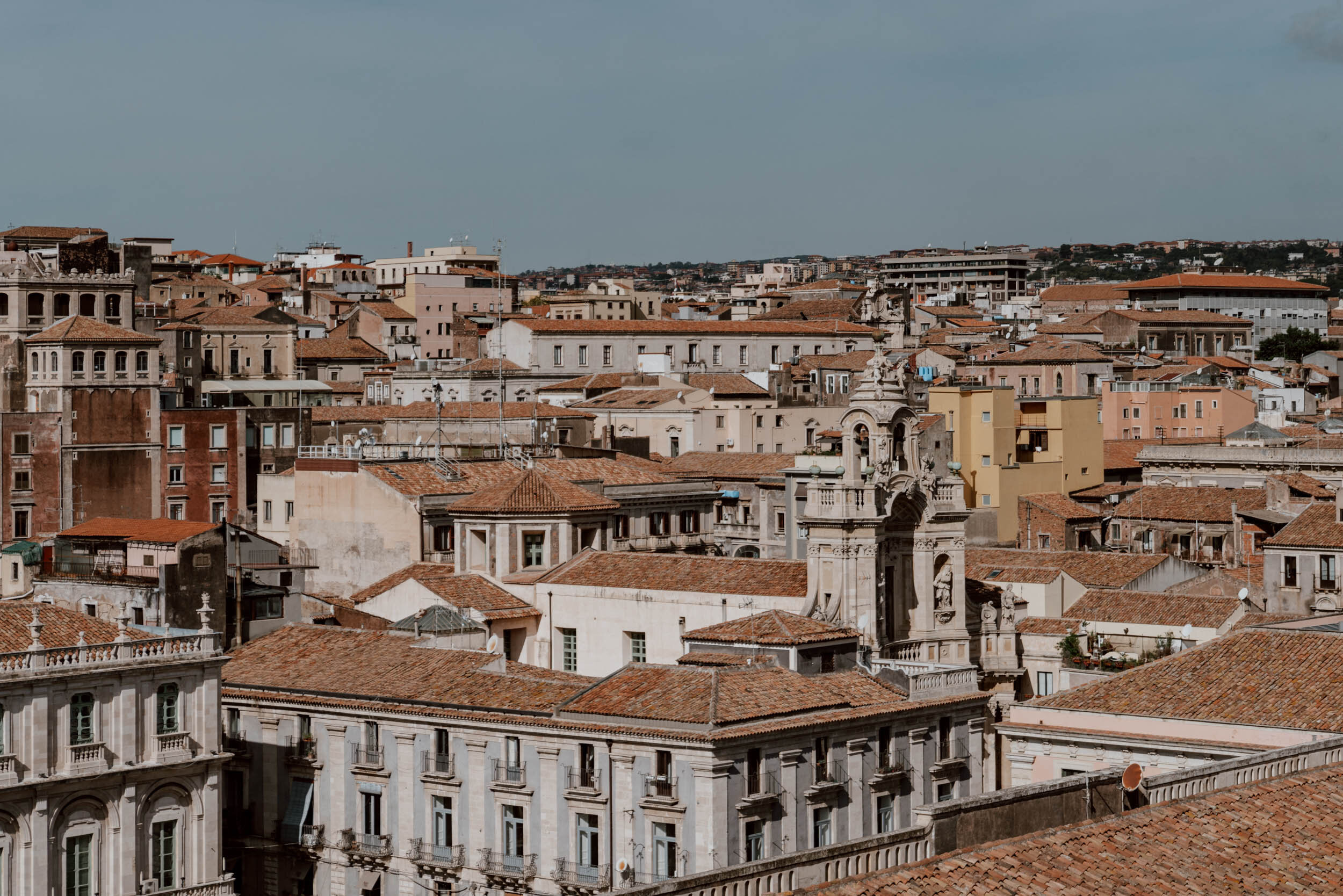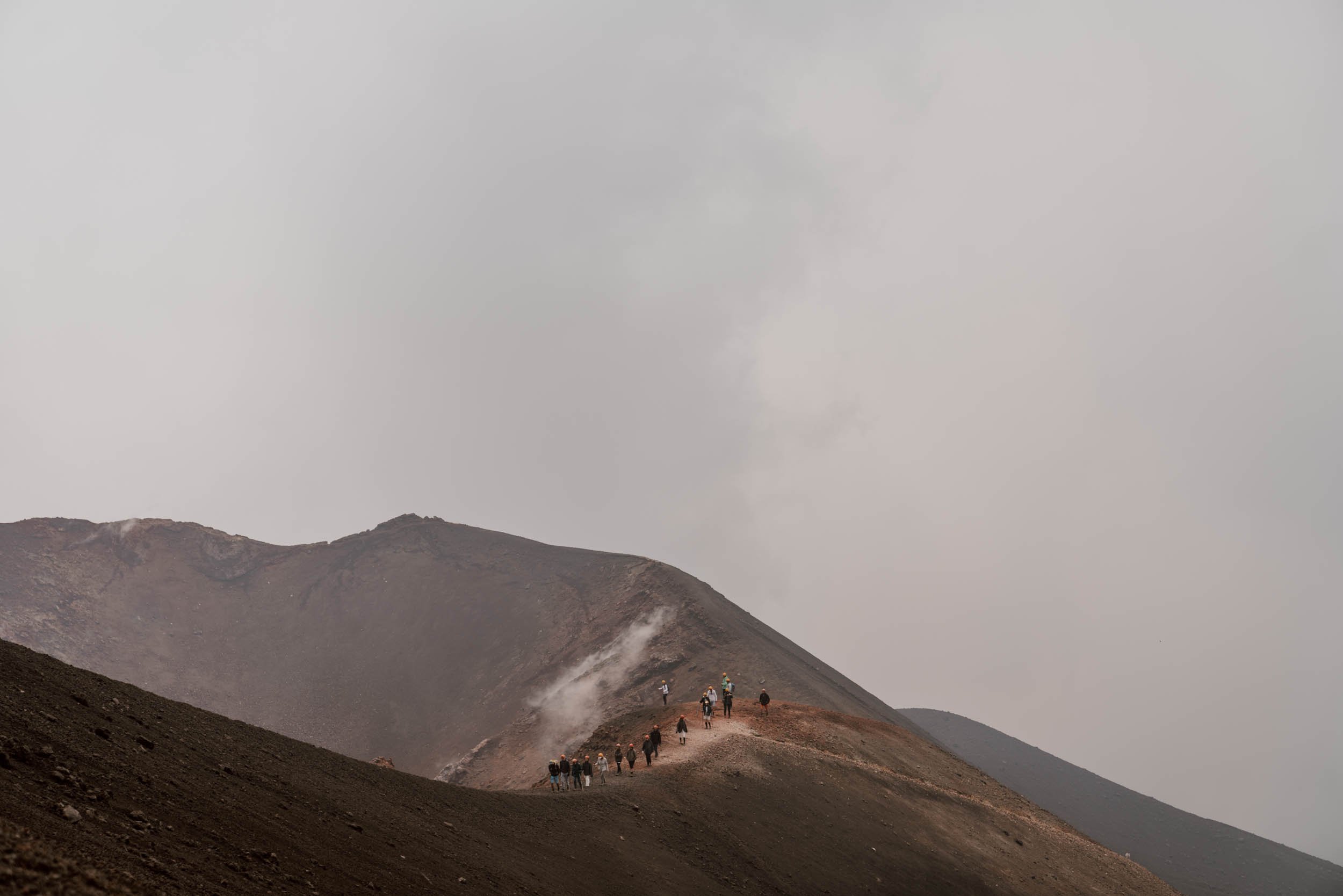“Each mountain in the Dolomites is like a piece of art.”
We are not ashamed to say that our ventures toward northern Italy were heavily inspired by Instagram.
Ok, we are actually a little ashamed to say that. After all, that’s really never been the way we’ve chosen our next adventure, and it all just seems a little too ‘predictable millennials’ if we’re honest.
However, the Dolomites had simply never been a destination on our radar when visiting Italy countless times before (our gaze always drifted further south towards the Mediterranean), and since neither of us were brought up in climbing or skiing households, the delights of that whole region were a complete unknown.
But then our feed became host to impossibly perfect cracked mountain peaks, dreamy green valleys, hairpin roads in the mist, and heavenly hiking trail scenes lined by wildflowers. The Dolomites were clearly calling us toward them, and so toward them we had to travel!
After our eight-day summer road trip, we've written this guide to help travellers like you who may also have been inspired to visit the Dolomites, but are a little unsure of how to start planning, the best experiences or photogenic spots in the region, or some of the essential information to know in order to make the most of your time in the Italian mountains! Alongside our personal travel tips and sharing some of the things we would've changed, it includes advice on the best places to visit, where to base yourself along the way, typical travel costs, and essential advice on enjoying these beautiful outdoors responsibly.
Here's 17 Things To Know Before You Visit The Dolomites.
So, What / Where Are The Dolomites
In the eastern section of the northern Italian Alps, the Dolomites mountain range is universally heralded as one of the most beautiful mountain ranges in Europe. Distinctive for their pale grey limestone hue, sharp peaks and intimidating clusters of jagged rock, they were formed approximately 200 million years ago.
It was recognised as a UNESCO World Heritage site in 2009.
Encompassing an area of 141,903 hectares and 18 peaks which rise to above 3,000 metres, 'The Dolomites' stretch across three Italian regions (Veneto, Trentino-Alto Adige / Südtirol (South Tyrol), and Friuli Venezia Giulia). Therefore, it isn't just to view these mountains that one travels here, it's to bask in the way the cliffs play off the pastures and meadows, the valleys and villages, the roads and the rivers, creating an inimitable alpine symphony in northern Italy.
If you're reading this, then the chances are that you'll be spending time in and around at least one of those regions and, even though may only be visiting a small section of the range or the region, that still means you're going to 'The Dolomites'.
Where To Fly In + Fly Out / How To Get To The Dolomites
As there's no designated 'Dolomites Airport' or single recognised transport hub, you actually have several options to visit the region. The best cities / airport to fly into are listed below, including drive time to the two places which are considered the main ‘gateways’ to the Dolomites (and where you’ll likely stay in and around on your first night):
Verona (Valerio Catullo Airport) | 2 hour drive to Bolzano, 3 hour drive to Cortina d’Ampezzo
Innsbruck (in Austria) | 90 minutes to Bolzano, 3 hours to Cortina d’Ampezzo
Venice (Marco Polo or Treviso Airports) | 3 hours to Bolzano, 2 hours to Cortina d’Ampezzo
Milan (Malpensa or Bergamo Airport) | 3+ hours to Bolzano, 5 hours to Cortina d’Ampezzo
Trieste | 4 hours to Bolzano, 3 hours to Cortina d’Ampezzo
Bologna | 3+ hour drive to both Bolzano and Cortina d’Ampezzo
Munich | A reader let us know about this route. Munich is 3 hours away by car, but the catch is that you need to buy an Austrian highway "vignette" for €9 just before you cross the border at a petrol station.
This range of flight routes is great for snagging affordable tickets, flexibility for your home airport choice, and tagging a city break elsewhere in northern Italy onto the end of start of your Dolomites adventure. However, it does slightly increase the time necessary to work out what's best for your budget, route, or dates!
The Dolomites are made for a road trip (much more on that later), and renting your own car upon arrival at the airport is also the most practical way to travel onward into the heart of the region. It is possible to do it by train, but just be aware that it usually involves a connection or two and anywhere from 3-5 hours of travel.
Therefore, before finalising how to get to the Dolomites, we recommend you take a quick look at the car rental prices availability there for your dates. You might find that the options or costs vary enough between two airports to make the total cost quite different - and that renting a car in Innsbruck, Austria to cross over into Italy may causes issues for some rental companies (or increase costs). Depending upon which part of the Dolomites you're trying to reach first, or base yourself in, certain airport may also be slightly better positioned for access.
For car rental in Italy, we always look and book using AutoEurope. However, with prices increasing a lot in recent years, it’s a good idea to also check out Rentalcars.com
For trains, take a look at schedules + book tickets on Trenitalia or Omio. For buses, Flixbus is the best budget option for travel.
There is a very small airport in Bolzano, which is theoretically perfect. However, it has tried and failed at several junctures to garner enough commercial flights, and is used more for charters / private flights. There are rumours of a new Sky Alps airline operating from there though, so it may change in future...
Read Later // 12 Essential Tips For Train Travel in Italy
The Summer Season Starts + Ends Later Than You'd Think
We were surprised at the number of hotels and other tourist-facing businesses or facilities which were yet to reopen during our time in the Dolomites, with some places feeling like they were yet to fully emerge from their winter hibernation. A few trails were still actually shut due to snowfall.
But, this wasn't March or April we were travelling in; it was early June, a time that's usually sees the beginnings of the peak tourist traffic in Europe!
The owners of our first accommodation in the region (the exquisitely named Hotel Hell which was, actually, rather nice), explained that the summer season here basically starts a little later due to the intensity and length of the winters here in the mountains.
This means that the summer season technically really kicks from mid-to-late June, ramping up to its busiest month in August (the holy month of holidays for the Italians and French).
We were perfectly content to travel in early June however, and anecdotal evidence tells us that September is also great for hikes and manageable tourist numbers. Travelling slightly outside the peak summer season, aside from being more enjoyable, usually results in cheaper accommodation rates too. Just keep an eye on whether there's going to be a ton of late snow in May before arriving on June 1st, and be fully aware that some businesses, hotels, and tourist facilities or services (including cable cars) will be closed if you're visiting outside the summer season months.
The Dolomites offer a lovely climate for the outdoors from June to August, with average temperatures hovering between 26° - 30°C in the lowlands (but this doesn't mean you should only be packing shorts and t-shirts....more on that later). May and September offer a cooler 24° average temperature, which would be perfect for hikes.
As we mentioned in the introduction, neither of us ski or snowboard, and so our Dolomites guide is very much geared towards spring / summer trips and sunshine, rather than the slopes and snow! However, we should note that this is also a really famous and popular winter destination if you're into that sort of thing, with 8 out of 10 sunshine days (more than any other range in the Alps!)
It Feels Much More Like Austria than italy
We adore Italy, and it's the country we return to again and again. We've taken road trips around Puglia, spent a glorious month on the island of Sicily and, as I'm writing this, it's the country that's definitely going to be our first post-lockdown destination.
Travelling in the Dolomites however really does not really feel like travelling in that stereotypical Mediterranean dolce vita filmset of Italy filmset however. The landscapes, the architecture, the typography, the food, the people, the gesticulatory cultural tells and sing-song melodies are just not the same.
Instead, it feels more like being in Austria, Germany, or Switzerland.
Yes, there were even cows with bells on.
Of course, that this part of Italy has more of an Alpine aesthetic should have been obvious to us. Linguistically and culturally though, even down to the bed-making techniques, the contrast with the south is really quite stark - and you will be be forgiven at times for believing you've mistakenly crossed the nearby border with Austria.
However, one of the most fascinating things about travelling here, is discovering the tumultuous history of this region's to-and-fro between the two countries, particularly post World War One - and how it continues to cause issues on identity and national belonging for those who live in South Tyrol. We highly recommend you read this excellent Guardian article - "The South Tyrol identity crisis: to live in Italy, but feel Austrian" - before or during your Dolomites travels.
Don't worry though, it's still Italian enough that you're never too far from a decent Aperol Spritz...
It's Made for A Road Trip
If Scotland's North Coast 500 is Europe's best road trip, then we'd put the Dolomites up as a very strong contender for number two.
And if Alpine mountains are more your thing than the single-tracks and scenery of the Scottish Highlands, then it wouldn't be controversial to switch those two positions.
The smooth, wide roads are in really spectacular condition, . One of our most enduring memories from the Dolomites was the journey back to our Airbnb in the evening, when the roads were quiet, and we'd turn a corner in the middle of nowhere to be suddenly confronted with a mammoth peak coloured pink by the setting sun imposing itself as it pierced the heavens.
Aside from those serendipitous moments like those which only come from the independence and flexibility of a road trip, renting your own wheels is also the most practical way to visit and experience the most iconic and beautiful areas of the Dolomites. Indeed, taking on its winding mountain passes, with endless hairpin bends, blind corners, and epic views along the way, is PART of the Dolomites experience.
The only problem is that it does take a few evenings of planning and drafting to get something which works perfectly fo your own route, dates, and your budget - but also brings you to the places you've dreamed of visiting most. There is no 'fixed' Dolomites road trip route and, as we've mentioned, the region is actually quite vast and open to interpretation. Therefore, based on our own road trip route, and some tweaks we'd make in hindsight to make it even better, we've tried to make it all a little easier for you by sharing our 'Dolomites Road Trip' itinerary.
Also, due to that Austrian cultural identity, first-time drivers in Italy will also be very reassured to know that the approach to normal driving standards like, y'know, using indicators and overtaking in a non-Madhatter way are much more common than elsewhere in Italy.
To find out more of our driving tips and car rental advice for the Dolomites, as well as our recommended 5 to 7-day route for first-timers visiting in spring / summer, read our Dolomites Road Trip Guide! (published soon!)
Read More // We do a lot of road trips, and have condensed all our tips to reduce stress and save you quite a bit of money in this post: 9 Car Rental Tips For Travellers
As the cost of car rental has increased quite bit in the last two years, we recommend looking + booking via Auto Europe and Rentalcars.com to get a quick overview on prices and availability for your dates.
It's A Photographer's Dream
If, like us, Instagram is more than a little responsible for putting the Dolomites on your travel radar, then the good news is that you're not going to be disappointed.
Quite simply, the landscapes of the Dolomites are just as special in person.
However, whether you're a hiker or a photographer looking to appreciate them at their emptiest and most serene, then it's vital to know that this place is always increasing in popularity. Early starts are absolutely essential for the best light, the best positions, and the best experiences of the cyan jewels of Lago di Braies and Lago di Carezza or the Ambrossian meadow of Alpe di Suisi, whilst patience is essential at Lago di Sorapis.
And by early, we mean getting there for 5 a.m.
We did what we never do when photographing some areas of the Dolomites, and set our alarms super-early...and actually didn't hit snooze. However, for both those famous lakes, we arrived to find several independent photographers at the former and one large photography group at the latter...and it continued to get busier over the next hour or two!
If you're simply wanting to enjoy the hikes, then you don't need to get up at a ridiculous hour - that really is more of a photographer's alarm call. However, our general rule of thumb for hikes is that it's best to start early to avoid the crowds (and to experience Lago di Braies at its best).
Responsible travel and photography in these stunning, special landscapes is however imperative. We have shared more details on this below - and every aspiring photographer, blogger, vlogger, drone pilots, 'influencer', or anyone who wants to take some photos, should read it before you even think about posing or posting. Let's just say, there are some surefire ways to make yourself a Dolomites Dickhead...
Each Town Has Two Names, Some Have Three
Due to the various disputes over the region between Italy and Austria, and its position as a place of cultural and commercial exchange between distinct languages and cultures, both Italian and German are widely spoken in the Dolomites.
So, don't be surprised to find menus or signage in both or to be greeted by a cheery Guten Morgen rather than a Buongiorno! This officially recognised linguistic duality also impacts places names in the Dolomites. For example, the city of Bolzano is also called Bozen, it's Gröden or Val Gardena, Seiser Alm and Alpe di Suisi, whilst the region of South Tyrol is called both Alto Adige and Süd Tirol.
You’ll actually quite quickly pick up the predominant culture or linguistic preferences of a region or province i.e .Südtirol / Alto Adige is primarily German-speaking whilst the Veneto area feels much more Italian. Do note though that all who speak one language will not necessarily speak the other, or at least speak it to a decent standard. In South Tyrol for example, the native language breakdown is 70% German, 25% Italian, with Italian being more common in the cities and German dominating in the countryside.
Interesting fact | The growth of Italian here was part of Mussolini's specific attempts to 'Italianise' the region and population following the annexation to Italy of South Tyrol and Trentino in 1919.
Ortisei, the excellent small base town for day trips and explorations in the western section of the Dolomites, takes it even further with the addition of Ladin, an ancient Romansh language spoken only in the valleys of Val Gardena and Alta Badia by around 18,000 people. That means it goes by the following three monikers: St Ulrich (German), Ortisei (Italian), and Urtijëi (Ladin).
From our completely unscientific experience, the Dolomites are principally a tourism destination for Italians, Austrians, Germans, and the French - they aren’t really as well known amongst us Brits or the North Americans yet. That is, of course, is changing now due to social media influencing travel habits - and we are an example of that! However, if you speak neither Italian nor German, then don't worry too much. Though English wasn't very widely spoken, and we mostly relied on our mixture of our broken Italian and German, most ticket or tourist venues and most hotels had someone who spoke an OK level of English. Same goes for Airbnb hosts. You’ll never be too far from finding someone who can give an answer or help you out!
As ever, it's important to the learn the basic greetings and please / thanks in the local languages as a minimum - always useful for a hiking trail greeting too!
You Come To The Dolomites To Hike in the Dolomites!
If you've got no interest in walking, hiking, or being in the outdoors, then we'd actually recommend reconsidering whether a week or so in the Dolomites is the right choice for you. Simply driving around and enjoying the beautiful views from your car window is of course absolutely fine if that's your travel style or you have limited mobility, nothing wrong with that at all.
However, if you're able, then strapping on your hiking boots and setting off on a trail around the mountains or towards a glacier lake is something we highly recommend for first-timers in the Dolomites.
You come here to move, to explore, to get aching feet; this is an adventure rather than a holiday.
However, we'll level with you straight away - it's impossible to hike everything in the Dolomites in one or even two weeks. There are simply too many trails - famous and secret - and due to this a first-timer researching and shortlisting the best hikes to do can easily become overwhelmed.
We know we certainly did.
Essentially, you could spend a year here doing various hiking trails, visiting each and every peak several times from different perspectives, staying at hidden refugios, cycling mountain passes, rock climbing, doing Via Ferrata - and still there would be much left on your to-do list. So, it’s important to recognise that visiting for 7-14 days, and travelling at a sensible pace, does mean you’ll not be able to do EVERYTHING in the Dolomites.
It is however the perfect amount of time to have a wonderful introduction to the region, and experience several of its most beautiful spots.
Therefore, our recommendation for first-time visitors to the region is to stick to including two or three of the most popular Dolomites day hike options when making your itinerary and leaving room for a wildcard option if you have the time or get a recommendation.
These hikes include: the Tre Cime Hike, the Lago di Sorapis hike, the Alpe di Suisi hike, and the Seceda hike. The good news is that none of these are particularly hardcore or challenging, so offer up the perfect opportunity for not-so-hikey-hikers to access gorgeous mountain landscapes!
To avoid the crowds in summer season on these trails, you're always best to start as early as possible in the morning or start later in the afternoon (i.e. after 3 p.m.), providing light, conditions, and weather are appropriate.
Pick Your Hikes + Sights First, Find Your Base Towns Second
Related to the above, when planning for your own summertime Dolomites adventure, we think the best approach is to find out which hikes or sights you want to visit most, decide upon how many you can realistically include in your itinerary, and then find your accommodation based upon proximity, practicality, and preference.
Planning that way round is key to every road trip we take, as is focusing on choosing several base towns from which we can do day trips and settle down in a for a few nights. The alternative - of moving on to a new place each night for a week - is simply not fun and takes too much time away from experiences and relaxation, and flings it all to the basket market 'always unpacking, always driving, always basing your movements around check-in and check-out times'.
Thankfully, due to the remote and wide open spaces here, there are some clear base towns, cities, and villages which should feature on most first-time Dolomites itinerary. These include Ortisei, Bolzano, and Cortina d'Ampezzo.
BOOK YOUR ACCOMMODATION NOW. SERIOUSLY
As we mentioned, the best approach for accommodation in the Dolomites is to focus on staying 2-3 nights across 2-3 towns or villages, rather than constantly moving onward to another room in another town. The choice of town or village in and of itself isn't tooooo important if you have your own rental car, just as long as you are in proximity of a hike start point, cable car, or destination, and a sensible enough driving time away them.
If you know your dates already, we strongly advise starting to look at booking accommodation sooner rather than later to improve your chances of getting a place that's suitable for your budget, your travel style, and your itinerary.
You can check availability and prices on more than 600 accommodation options in the Dolomites on booking.com here.
However, we know that choosing the right hotel, hostel, guesthouse, Airbnb or self-catering lodge involves a lot of work, wasted time and research, so we decided to help you out. Based on our own experiences and research, we've created this Dolomites Accommodation guide (published soon, we promise!). It includes our personal picks of the best accommodation options close to the best hikes or landmarks, or in key base towns, for various budgets and travel styles - hopefully you will find something that's perfect for you!
Read Later | The Best Dolomites Accommodation + Places To Stay Along The Way (published soon, we promise!)
Bring Cold Weather Clothes in Summer!
Andrew was very gung-ho about packing light for our summer in the Dolomites. After all, it was June in Europe and all about exploring the outdoors in sunny weather! Right?
Wrong!
As we mentioned, snow is still lingering, many hikes are at altitudes, and IT'S THE BLOODY MOUNTAINS ANDREW! Thankfully Emily was quite belligerent on this point, so with waterproof jackets and warm layers to the mountains we did go.
And boy did we need them!
Most days were beautifully warm and sunny, so we could hike in shorts and t-shirt. But rainstorms would often appear out of nowhere (one on Tre Cime saw us hiding in an abandoned refugio for an hour), or an increase of a few 100 metres saw quite a rapid drop in the temperature. Similarly, early morning departures meant that we'd start the days wearing a layer or two more than we'd need once it had warmed up.
So, in short, we think you definitely need to pack the following in your adventure bag for the Dolomites in summer, alongside whatever else you'd usually bring and your preferred hiking / outdoors clothes:
Hiking boots or hiking shoes (which you’ve worn in already)
Several pairs of hiking socks.
A hat, cap, or buff.
Suncream - it's really really strong up there.
1-2 refillable water bottles for hikes (a travel filter water bottle is always a good idea too), rather than creating unnecessary plastic waste
A lightweight fleece
A waterproof (not water resistant, waterproof!)
A blister pack, just in case
Walking poles (optional)
Travel Tip | Though some hikes and day trips bring you to a decent altitude - i.e. Lago di Sorapis is at 1,925 metres / 6,316 ft above sea level - the levels involved don't mean acclimatisation or altitude sickness should be a concern for most (unlike travelling in South America, where it's a constant issue for many). If you’re curious, you can find out more about how to deal with altitude sickness here.
Learn About Via Ferrata & Rifugios
Rusting iron bars hammered into the rock face, linked by lengths of cable and ladder, are quite common place in this part of Italy, and have a fascinating history. Known as Via Ferrata, or ‘The Way of Iron’, they had existed for a few decades as a way to facilitate mountain access or ascents. However, many of the 700 iron paths in the Dolomites were constructed during World War One, when the mountains and their passes were a critically strategic frontline between Austria and Italy, and a better way to traverse them with weapons, men, and supplies was necessary.
They’re really quite ingenious, despite the bloody end they ultimately led hundred of soldiers toward.
Today, the Via Ferrata are a unique draw for visitors and adventurers. There are easy ones to very difficult ones, and navigating them by hooking and unhooking carbiners attached to your harness is great fun despite the wobbly knees at moments.
We were fortunate enough to do a couple of guided Via Ferrata routes in and around Trento before we drove up to begin our Dolomites road trip, so we didn’t prioritise doing them here. The only other British couple we met in the region, during that unscheduled rainstorm in Tre Cime, were hardcore outdoors people who had visited the region a few times before and were specifically catering their time here around doing Via Ferrata. They had all their own serious equipment, and it sounded incredible. We would highly recommend doing one or two easier ones to start with if you have the opportunity with a guide - do not attempt them if you do not have the necessary equipment, training, or experience.
This article has more information and inspiration about navigating the Via Ferrata in the Dolomites, or you can find some tours here.
Do note however that Via Ferrata are often excluded in travel insurance. With True Traveller, who we’ve bought insurance with for the last few years, you have to purchase the specific ‘Adventure pack’ to cover it an insured activity. Mountain rescue is a serious business, and you don’t want to have to foot the bill for any helicopters or teams being sent out to help if you’re injured. Whether you’re coming to the Dolomites to do a road trip and hiking, or serious cycling, mountaineering or rock climbing, always make sure you’ve got travel insurance which covers your travel style appropriately.
Rifugios in the Dolomites were one area of slight regret for us. Essentially, they are a loose network of mountain huts (literally 'refuges'), which offer hikers a way to stay deep within the peaks and the trails. Open in the summer season, some are very bare bones rustic and basic whilst others are a little more like a basic hotel but, aside from a warm bed and good food for the night, they are usually situated in beautiful setting too. We had read quite a bit about them when planning, and really wanted to spend at least a night in one. However, many were not yet open in early June, and those that were either didn’t make a sensible addition to our route or length of trip. We did make made it to two on separate trails, but only for a drink along the way.
Though not all rifugios are remote or difficult to access, if you're seriously planning on going hut to hut, or basing your Dolomites trip more around hiking and staying in rifugios, then it’s really important to plan ahead and know how the archaic booking systems work, what to bring, and exactly what to expect. This article has the best overview about how they work and what you need to know in advance to get organised.
Take Maps
There are SO many routes and trails in the Dolomites, and all those we visited were pretty well established and signposted out with the custom red and white markers.
However, it's a really good idea to pick up some paper maps of trails whilst you're in the destination or save blog posts which have specific instructions. Similarly, have Google Maps and / or Maps.Me on your phone so that you can have an offline trail to hand if you do take a wrong turn or get a little lost.
We found this website to have particularly thorough hiking instructions and would recommend starting here when researching a route.
Read More | 26 Best Travel Apps
Don't Be A Dolomites Dickhead
The downside of a destination becoming popular on Instagram is that it is guaranteed to see a rise in the negative consequences of being 'Insta-famous'.
Rule-breaking to get photos. Lack of regard or consideration for other travellers. Lack of care for the outdoors and nature in order to 'do it for the gram'. A blinkered approach to condensing a place down to only a few famous locations, rather than experiencing it with eyes wide open to irresistible beauty all around. The prioritisation of fast travel over slow.
Unfortunately, as in the Faroe Islands, we saw and heard of far too much of this behaviour in the Dolomites to not let it go unsaid or unmentioned here. Scores of people swimming in pristine lakes that you're not allowed to swim in (just for photos), flying of drones illegally disrupting the serenity of early morning peace and birdsong at other lakes, going off trail or beyond fences in order to mimic someone else's photo, trampling over wildflowers to get a more perfect shot. People trespassing breaking into a very famous boathouse in the morning to take photos of themselves on the boats.
The list is as long as it is dispiriting.
Although responsible travel and respect for nature, the outdoors, and other travellers should go hand-in-hand with a location such as the Dolomites - and the majority adhere to this - it's clear that this is going to become an ongoing problem.
So, please, please, please don't prioritise your photography or your followers or the curation of the Dolomites over the actual experience, the preservation of its beauty, and the other travellers who are right there trying to enjoy it for themselves.
And if you see irresponsible behaviour, such as people swimming in Lago di Sorapis or trying to break into a boathouse or flying a drone against the express instructions not to, then you have our blessing to politely tell them not to (and to tell them not so politely if they don't listen the first time round).
Travel with respect, and leave no trace.
It also appeared to be quite a dog-friendly destination, but please do keep your four-legged friend on a lead where the signs advise it.
Read Next | 7 Steps To Avoid Being A Dick in The Outdoors (published soon, we promise!)
Anticipate Alpe Di Suisi Complications
One of the most famous locations in the Dolomites is Alpe di Suisi.
However, reaching it actually involves quite a lot of advance planning, an early rise, and understanding some very strict and specific restrictions about access and accommodation.
We've shared all the essential information to help you prepare in this standalone post: 5 Things To Know Before You Visit Alpe di Suisi (published soon, we promise!)
Are The Dolomites Expensive?
Once Emily had decided that we were visiting the Dolomites, the only point of contention about their viability was on the potential costs. Flights are cheap to reach the region, but we've both grown up believing that anything involving mountains in Europe is likely to be exclusive, expensive, and not for us.
Now, although the Dolomites are certainly expensive for Italy, they weren't actually as expensive as we feared. Indeed, they're a bargain in comparison to the mountains of Switzerland.
Accommodation was probably our biggest challenge, and an awful lot of research when into sourcing various apartments and hotel rooms which suited our budget. Plus, we would seek out cheaper family restaurants for pizza or pasta, or cook in and prepare packed lunches in our Airbnb rather then dine out at fancier restaurants. This approach helped to keep costs down, but our jaws did drop at some of the rates for all day car parking and the cablecars journeys - which are essential to do several hikes.
Find out more, and plan you own budget, in our Dolomites Travel Costs post.
Top tip | As vegetarians (and a nearly vegan in Emily), we usually have no problems dining out in Italy. However, whilst there was usually a simple tomato pasta or Pizza Margherita on the menu here, we found the Dolomite region to have much more meat heavy offerings.
You'll Love It
Now, after sharing some of the dull information and mundane realities to help you plan the best trip possible, we always like to end these posts on a high note. Because, after all, travel shouldn't just be about the planning and the plotting, but about being bloody excited to go somewhere new, and explore somewhere beautiful.
We both absolutely loved our Dolomites trip, and it delivered on Emily's lofty expectations. As an outdoors destination in Europe, it's really damn special.
Whether it's experiencing aquamarine lakes as dawn breaks, hiking to impossibly remote destinations or watching sunset over the mountain peaks we are pretty confident you'll love travelling in the Dolomites too.



